What’s Up?
I shopped in Suffolk County on Wednesday morning for some cold weather gear. And hung out with my Mom in the afternoon. Several folks singed up recently for the Fort DeSoto Spring In-the-Field Cheap Meet-up Workshop (ITFW) on the morning of April 22, 2017. For info on the Meet-up Workshop and the complete IPT, click here. I fly back to Orlando mid-afternoon on Thursday.
Great Galapagos IPT News
With two folks signed up for the August 2017 Galapagos trip there is now just one opening for a single male on the world’s greatest photographic trip to the archipelago, almost surely my last. I could squeeze in a desperate couple …
As Fate Would Have It ..
When I flew to Long Island late on Monday afternoon it was the first time that I could remember getting on a plane without a Think Tank rolling bag filled with photography gear … At security, I felt naked. “Where’s my gear bag?” The visit to my Mom would be a very short one and I had two appointments with Dr. Dan Holland at True Sports Care in Nesconset. And the weather was supposed to be horrific so at the last minute I decided to make the trip camera- and lens-less.
On Tuesday morning I looked out at my Mom’s backyard through a light drizzle and saw a duck with a lot of white on it. “Maybe it’s a soup duck” I thought. But I threw on my sweatshirt and headed out for a closer look. There, 40 feet away, in lovely, still, dark water was a pair of Hooded Mergansers. The male with its crest fully erect was showing off to his lady friend. Worse yet, as I got closer to the edge of the pond, the pair did not swim away from me … As fate would have it, I have zero good images of this gorgeous bird.
The Learning Never Stops …
In the recent Using Tv Mode to Attain a Minimum Shutter Speed. ISO Quiz, and Pushing the Limits … blog post here, nobody has yet come up with the ISO that I used for the hummer image. Are the guesses too high? Too low? Who knows? Do consider chiming in. In addition, there have been lots of comments on the use of Manual mode with Auto ISO and EC …
Gear Questions and Advice
Too many folks attending BAA IPTs and dozens of folks whom I see in the field, and on BPN, are–out of ignorance–using the wrong gear, especially when it comes to tripods and more especially, tripod heads… Please know that I am always glad to answer your gear questions via e-mail.
The Streak: 440
Today’s blog post marks a totally insane, irrational, illogical, preposterous, absurd, completely ridiculous, unfathomable, silly, incomprehensible, what’s wrong with this guy?, makes-no-sense, 440 days in a row with a new educational blog post. As always–and folks have been doing a really great for a long time now–please remember to use our B&H links for your major gear purchases. For best results use one of our many product-specific links; after clicking on one of those you can continue shopping with all subsequent purchases invisibly tracked to BAA. Your doing so is always greatly appreciated. Please remember: web orders only. And please remember also that if you are shopping for items that we carry in the BAA Online Store (as noted in red at the close of this post below) we would of course appreciate your business.
Selling Your Used Gear Through BIRDS AS ART
Selling your used (or like-new) photo gear through the BAA Blog or via a BAA Online Bulletin is a great idea. We charge only a 5% commission. One of the more popular used gear for sale sites charges a minimum of 20%. Plus assorted fees! Yikes. The minimum item price here is $500 (or less for a $25 fee). If you are interested please e-mail with the words Items for Sale Info Request cut and pasted into the Subject line :). Stuff that is priced fairly–I offer free pricing advice, usually sells in no time flat. In the past few months, we have sold just about everything in sight. Do know that prices on some items like the EOS-1D Mark IV, the old Canon 500mm, the EOS-7D, and the original 400mm IS DO lens have been dropping steadily. Even the prices on the new 600 II and the 200-400 with Internal Extender have been plummeting. You can see all current listings by clicking here or by clicking on the Used Photo Gear tab on the right side of the yellow-orange menu bar above.
Recent Successful Used Gear Sales
Activity in the last week has been hot!
Note: I missed adding several items below while I was in South America for ten weeks with limited internet access. If your item has sold but is still listed on the Used gear page please let me know via e-mail.
- Teresa Mabry Reed sold both her Canon EOS-1D X in excellent plus condition for $2399 and her EOS Canon 5D Mark III also in excellent plus condition for $1429 within two days of listing them with BAA.
- Gene Scarborough sold a Canon EF 500 mm f/4L IS USM super telephoto lens in excellent condition for $4049 one day after it was listed.
- Multiple IPT-veteran Mike Goldhamer sold his Canon EF 400mm f/4 IS DO lens in excellent condition for the record low price of $2100 a while back.
- Dear friend and multiple IPT veteran Patrick Sparkman sold his Canon EOS 5DS R with the Canon battery grip in like-new condition for $2899 back in early November.
- IPT veteran Gerold Hanck sold his Canon 100-400 mm f/4.5-5.6 telephoto zoom lens, the “old 1-4,” in excellent condition for $549.
- Henry Raymundo sold both his Canon 500mm f/4L IS USM lens (the “old five”) in excellent condition for $3999 and a Canon EOS 7D camera body in excellent condition for $399 back in November, 2016.
New Listings
Canon EF 500 mm f/4L IS USM Super Telephoto Lens
This great package sold before it was listed!
Do see Brian Patteson’s similarly priced, similarly conditioned package on the Used Gear Page here.
James P. Nelson is offering a Canon EF 500 f/4L IS USM Super telephoto lens with amazing extras in like-new condition for $4,499. The sale includes the lens, the Rear Lens Cap, the ET-163 Lens Hood, the lens trunk, the ET-163 lens cover, a green camo LensCoat, the lens strap, a Wimberley P-40 lens plate, one each of the Canon Version II TCs: 1.4X and 2X, Canon Drop-in Circular Polarizing filter PL-C52 and insured ground shipping via major courier to US addresses only. All of the extras are in mint condition. Your items will not ship until your check clears unless other arrangements are made. Payment by USPS money order or bank cashier’s check is preferred.
Please contact James via e-mail or by phone at 970-577-9884 (Mountain time).
The old five is a fairly lightweight super-telephoto lens that work well with both TCs. It is fast and sharp. I used mine as my workhorse lens (along with the old 600mm f/4) for almost ten years to photograph birds and wildlife all over the world. Both have been replaced for me by their version II counterparts. The 500 f/4s have long been the world’s most popular super-telephotos for wildlife and sports. With everything in Jim’s package in mint or like-new condition, his package is priced to sell quickly. artie
Canon EF 100-400 zoom f/4.5 – 5.6 L IS Telephoto Zoom Lens
James P. Nelson is also offering a Canon EF 100-400 zoom 1:4.5 – 5.6 L IS telephoto lens in excellent plus condition for a very low $549. The sale includes the Rear Lens Cap, the Front Lens Cap, the Canon ET-83C lens hood, a Wimberley lens plate, the tough fabric Canon lens bag, and insured ground shipping via major courier to US addresses only. Your item will not ship until your check clears unless other arrangements are made. Payment by USPS money order or bank cashier’s check is preferred.
Please contact James via e-mail or by phone at 970-577-9884 (Mountain time).
The old 100-400 was and is a superb lens. I made hundreds of sale-able images with mine including the one used on the front cover of Scott Weidensaul’s “Return to Wild America”. Contrary to reports by the internet idiots the lens is -– in competent hands -– sharp at all focal lengths and it is sharp wide open. It is extremely versatile and would make a great starter lens for those interested in bird, wildlife, and general nature photography. artie
|
|
|
This image was created at La Jolla, CA with the hand held the Fujifilm XF 100-400mm f/4.5-5.6 R LM OIS WR lens (at 211mm) and the Fujifilm X-T2 Mirrorless Digital Camera body) outfitted with the Fujifilm VPB-XT2 Vertical Power Booster Grip. ISO 800. Pattern metering at about zero: 1/400 sec. at f/6.4 in Manual mode. AWB. Shutter Button Continuous Autofocus. Additional AF information is unavailable. Image #1: Displaying Brandt’s Cormorant on nest |
Brandt’s Cormorants
When I got to San Diego I was thrilled to learn that the Brandt’s were once again nesting at La Jolla. And so was the IPT group. And with the unusual for San Diego mostly cloudy skies we had many chances to photograph this handsome species.
Picking the right tool for the job–161 or 1200mm?
You first job when you spot a nice situation is to visualize the image that you want to create and then pick the best tool (lens plus accessories) for the job. When I wanted to include most of the nest I went to the (Fujinon) 100-400. Note that the 161mm focal length worked out to effective 241.5mm. For additional stability, I braced my left forearm on the top of the wooden fence.
On another visit, there was a bird working on a nest about 5 feet closer than all the others. So I grabbed the tripod, the 500 II, the 2X III, and my now beloved 5D Mark IV and went to work creating verticals. I took about 200 images. The group was wondering exactly how I could possibly select one or two or five or ten to keep. At lunch one day, we looked at the images closely in Photo Mechanic. One image at a time I pointed out small differences that made a big difference. I wound up keeping about 40 images. On my second edit, I whittled those down to about 25. And on my Monday afternoon flight, I completed my third edit. Only seven images survived. Today’s featured image #2 turned out to be my very favorite (though it was quite a close decision).
|
|
|
This image was created at La Jolla, CA with the Induro GIT 304L/Mongoose M3.6-mounted Canon EF 500mm f/4L IS II USM lens, the Canon Extender EF 2X III, and my favorite bird photography camera, the Canon EOS 5D Mark IV. ISO 800. Evaluative metering +2 stops: 1/200 sec. at f/9 in Manual mode. AWB. Two AF points to the right of the center AF point/AI Servo Expand/Shutter Button AF as framed was active at the moment of exposure. The selected AF point was almost squarely on the bird’s eye. Click on the image to see a larger version. FocusTune/LensAlign Micro Adjustment: -5 Image #2: Tight head shot of Displaying Brandt’s Cormorant |
Add Green Whenever Possible
I’ve realized for about as long as I have been photographing — 34 years this August — that adding green to an image is always a good idea. I think that that first that appeared in print in The Art of Bird Photography (ABP). Learn the basics of bird photography in ABP and add the digital follow-up, The Art of Bird Photography II (ABP II: 916 pages, 900+ images on CD only). Save $10 by ordering the two-book bundle here.
Your Favorite?
Please take a minute to leave a comment and let us know which of today’s featured images is your favorite. And be sure to let us know why.
Your General Approach?
Do you tend to shoot wide and include more habitat or to work tight? Either way, let us know why.
The San Diego Site Guide
In the San Diego Site Guide I share the secrets learned over almost four decades of visits to this great bird photography area. If you already own the guide but missed last year’s San Diego Grebe and Cormorant update, please shoot me an e-mail with a cut and paste of the title page in the Subject Line (or some other proof of purchase). New purchasers are invited to e-mail me their BAA Online Store receipt.
San Diego Site Guide Kudos
Dear Artie, Using your San Diego site guide was terrific!! It was clear, concise and led me straight to the Brown Pelicans, the bBreeding Brandt’s Cormorants, assorted ducks, etc. And along the way there were terrific landscape opportunities. The guide helped me maximize the limited time I had when I was was in La Jolla and nearby San Diego. If you are planning to visit San Diego/La Jolla in the winter and want to capture images of Brown Pelicans in breeding plumage, etc., buy the San Diego site guide. It’s as close as you can get to having Artie at your side when you can’t attend his IPT.
Best regards, Marc Schoenholz
|
Images and card design copyright: Arthur Morris/BIRDS AS ART. Click on the card to enjoy a spectacular larger version. |
2017 UK Puffins and Gannets IPT
Monday July 3 through Monday July 10, 2017: $5999: Limit 10 photographers — Openings: 6). Two great leaders: Arthur Morris and BPN co-owner, BPN Photography Gear Forum Moderator, and long-time BAA Webmaster Peter Kes.
Here are the plans: take a red eye from the east coast of the US on July 2 and arrive in Edinburgh, Scotland on the morning of Monday July 3 no later than 10am (or simply meet us then at the Edinburgh Airport–EDI, or later in the day at our cottages if you are driving your own vehicle either from the UK or from somewhere in Europe). Stay 7 nights in one of three gorgeous modern country cottages.
There are five days of planned puffin/seabird trips and one morning of gannet photography, all weather permitting of course. In three years we have yet to miss an entire day because of weather… In addition, we will enjoy several sessions of photographing nesting Black-legged Kittiwakes at eye level.
|
Images and card design copyright: Arthur Morris/BIRDS AS ART. Click on the card to enjoy a spectacular larger version. |
The Details
We will get to photograph Atlantic Puffin, Common Murre, Razorbill, Shag, and Northern Gannet; Arctic, Sandwich, and Common Terns, the former with chicks of all sizes; Black-headed, Lesser-Black-backed, and Herring Gulls, many chasing puffins with fish; Black-legged Kittiwake with chicks. We will be staying in upscale country-side lodging that are beyond lovely with large living areas and lots of open space for the informal image sharing and Photoshop sessions. The shared rooms are decent-sized, each with a private bathroom. See the limited single supplement info below.
All breakfasts, lunches and dinners are included. All 5 puffins boat lunches will need to be prepared by you in advance, taken with, and consumed at your leisure. I usually eat mine on the short boat trip from one island to the other. Also included is a restaurant lunch on the gannet boat day.
If you wish to fly home on the morning of Monday July 10 we will get you to the airport. Please, however, consider the following tentative plans: enjoy a second Gannet boat trip on the afternoon of Monday July 10 and book your hotel room in Dunbar. If all goes as planned, those who stay on for the two extra days will make a morning landing at Bass Rock, one of the world’s largest gannetries. . We will get everyone to the airport on the morning of Wednesday July 12. (We may opt to stay in Edinburgh on the night of July 11.) Price and details should be finalized at least six months before the trip but you will need to be a bit patient. It would be ideal if I can get all the work done by the end of September so that folks can arrange their flights then.
|
Images and card design copyright: Arthur Morris/BIRDS AS ART. Click on the card to enjoy a spectacular larger version. Scroll down to join us in the UK in 2016. |
Deposit Info
If you are good to go sharing a room–couples of course are more than welcome–please send your non-refundable $2,000/person deposit check now to save a spot. Please be sure to check your schedule carefully before committing to the trip and see the travel insurance info below. Your balance will be due on March 29, 2017. Please make your check out to “Arthur Morris” and send it to Arthur Morris/BIRDS AS ART, PO Box 7245, Indian Lake Estates, FL, 33855. If we do not receive your check for the balance on or before the due date we will try to fill your spot from the waiting list. If your spot is filled, you will lose your deposit. If not, you can secure your spot by paying your balance.
Please shoot me an e-mail if you are good to go or if you have any questions.
Single Supplement Deposit Info
Single supplement rooms are available on a limited basis. To ensure yours, please register early. The single supplement fee is $1575. If you would like your own room, please request it when making your deposit and include payment in full for the single supplement; your single supplement deposit check should be for $3,575. As we will need to commit to renting the extra space, single supplement deposits are non-refundable so please be sure that check your schedule carefully before committing to the trip and see the travel insurance info below.
Travel Insurance
Travel insurance for big international trips is highly recommended as we never know what life has in store for us. I strongly recommend that you purchase quality insurance. Travel Insurance Services offers a variety of plans and options. Included with the Elite Option or available as an upgrade to the Basic & Plus Options you can also purchase Cancel for Any Reason Coverage that expands the list of reasons for your canceling to include things such as sudden work or family obligation and even a simple change of mind. My family and I use and depend on the great policies offered by TIS whenever we travel. You can learn more here: Travel Insurance Services. Do note that many plans require that you purchase your travel insurance within 14 days of our cashing your deposit check of running your credit card. Whenever purchasing travel insurance be sure to read the fine print careful even when dealing with reputable firms like TSI.
Please Remember to use my Affiliate Links and to Visit the New BAA Online Store 🙂
To show your appreciation for my continuing efforts here, we ask, as always, that you get in the habit of using my B&H affiliate links on the right side of the blog for all of your photo and electronics purchases. Please check the availability of all photographic accessories in the New BIRDS AS ART Online Store, especially the Mongoose M3.6 tripod head, Wimberley lens plates, Delkin flash cards and accessories, and LensCoat stuff.
As always, we sell only what I have used, have tested, and can depend on. We will not sell you junk. We know what you need to make creating great images easy and fun. And please remember that I am always glad to answer your gear questions via e-mail.
I would of course appreciate your using our B&H affiliate links for all of your major gear, video, and electronic purchases. For the photographic stuff mentioned in the paragraph above, and for everything else in the new store, we, meaning BAA, would of course greatly appreciate your business. Here is a huge thank you to the many who have been using our links on a regular basis and those who will be visiting the New BIRDS AS ART Online Store as well.
Be sure to like and follow BAA on Facebook by clicking on the logo link upper right. Tanks a stack.
Typos
In all blog posts and Bulletins, feel free to e-mail or to leave a comment regarding any typos or errors. Just be right :).

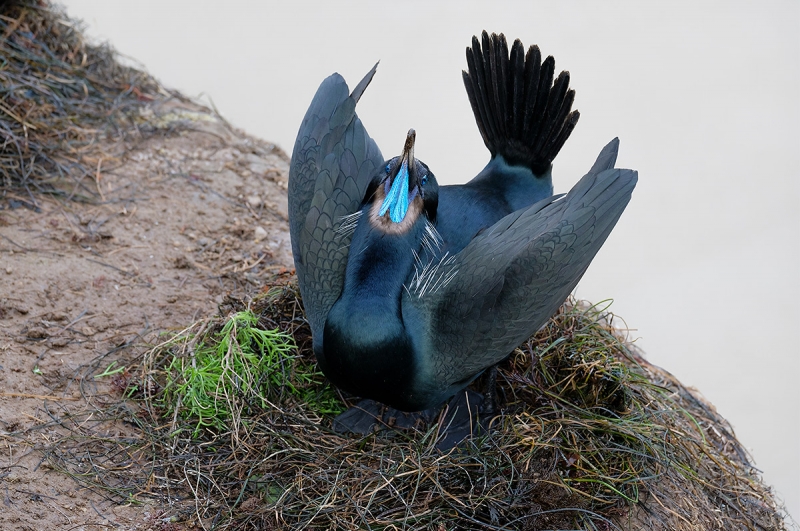
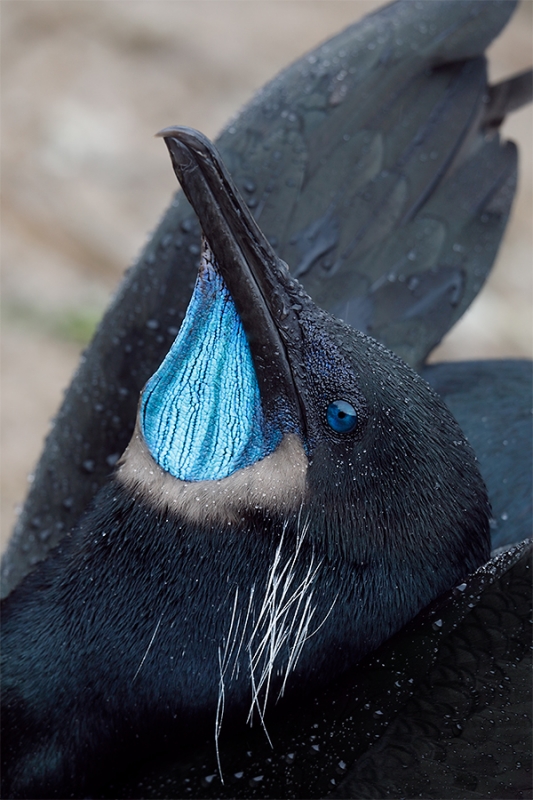
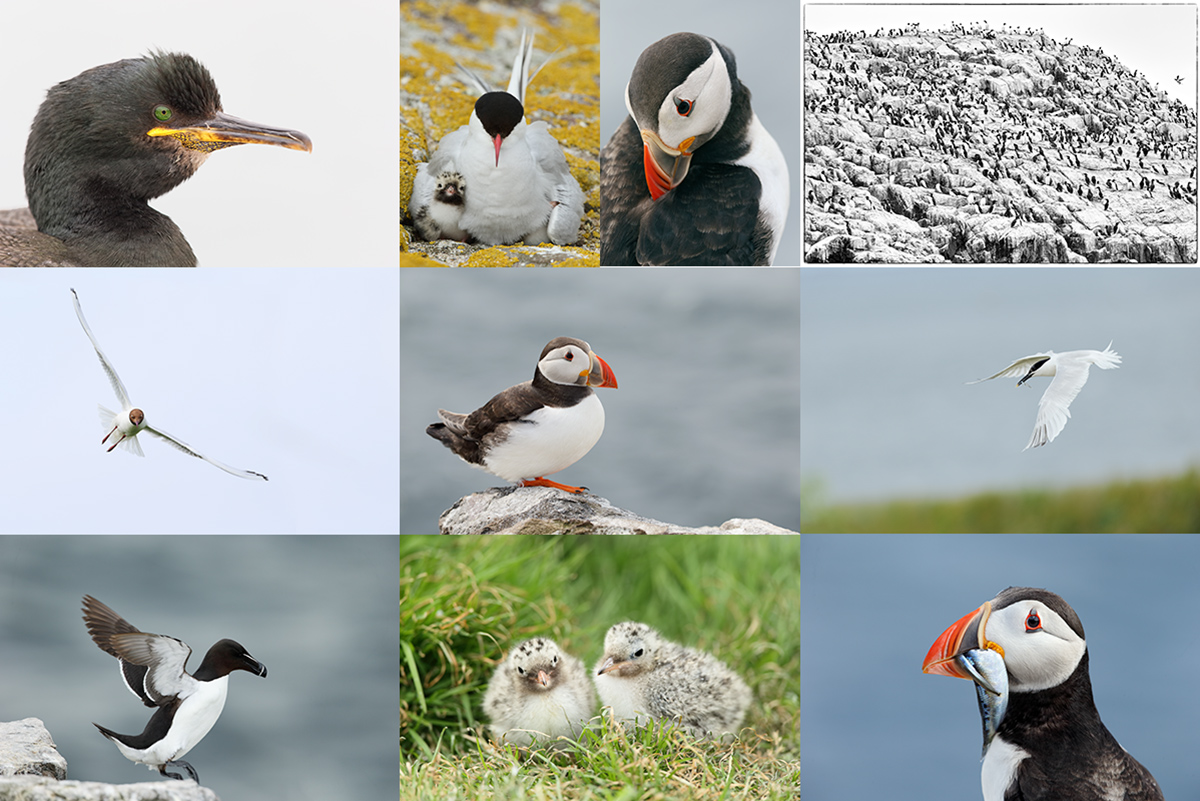
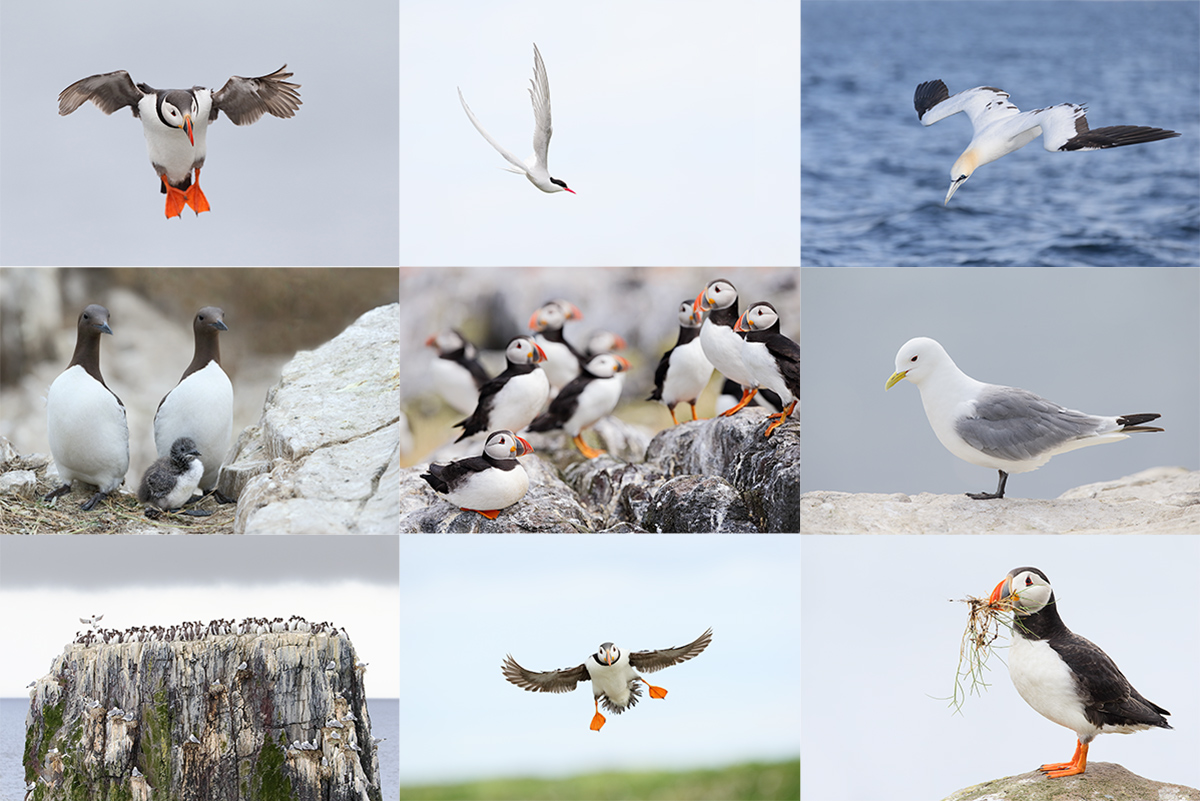
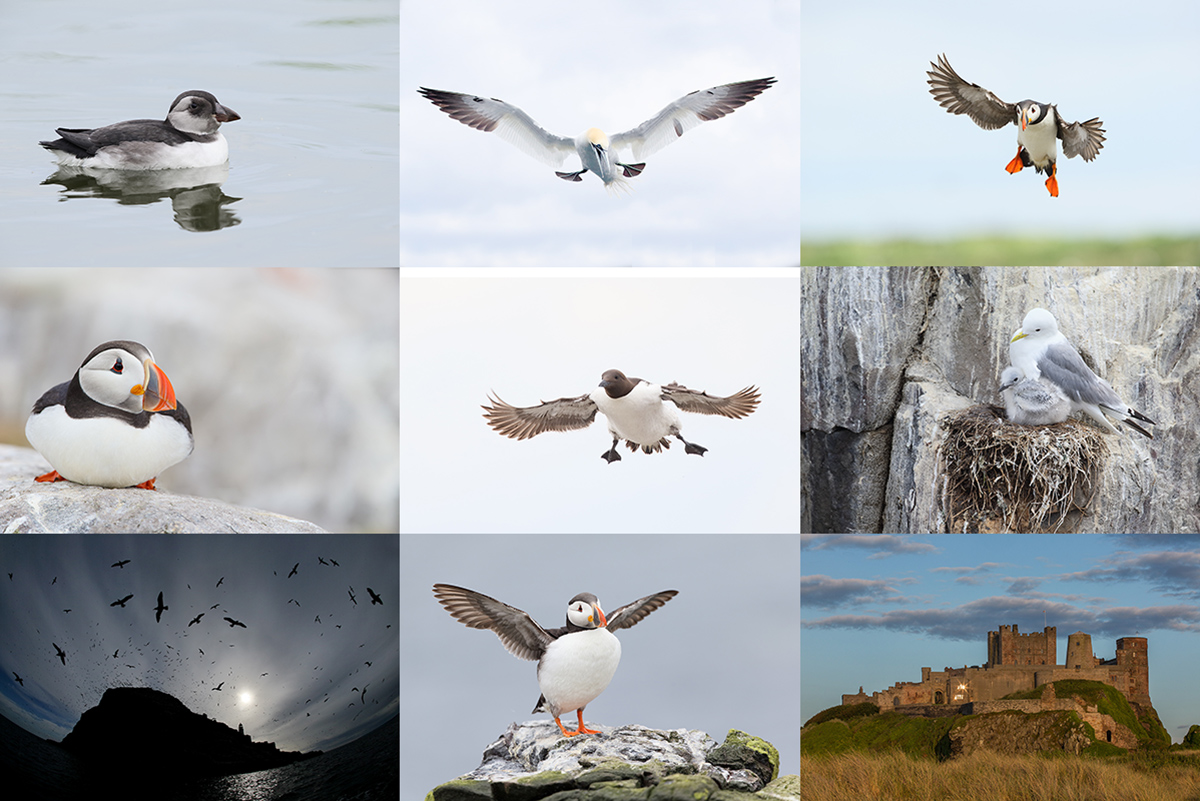













Good morning Artie,
Once again, the adage, don’t leave home without it. Two summers ago while in SW Montana, we watched a young Red Tail hawk fluttering over some potential prey for about 5 minutes no more than 50 feet from the car. Sun angle was perfect late in the day, great light, great background, wonderful subject. Guess what, no camera. Kinda stuck in my brain.
Love both the images, but prefer the tight one. Love bird portraits. They are such great animals. Their eyes (the blue eye on this Cormorant is phenomenal), the details and colors of the plumage, the color of the neck, and in this case, the water droplets. Can’t tell you how many shots I have of Pelican faces. I don’t seem to be able to get enough. On the other hand (I’m with you) if the background is not too cluttered, shots showing the environmental can be great. But, I prefer a soft background, kind of like the Boque (sp?) in a portrait photography. For example, a Sandhill in flight with the soft golden colors of the hills of Bosque in the background. But I prefer to have the hills completely out of focus, they just provide background texture and color. So for me, tighter is preferred with soft fuzzy backgrounds.
There is certainly story-telling value in #1, but I kept leaning in to my monitor as I looked at it. 🙂 So I was happy to see the tight crop on #2, and that’s my favorite.
Ironically, in general I lean toward including a bit of habitat in my images. I remember calling your office in 2005 looking for advice on 500 vs 600mm, and was surprised that you answered the phone and patiently answered my questions. The “how much habitat?” question was one of the questions you asked me. I bought the “old” 500mm f/4 and both teleconverters and have been happy ever since.
I noted your +2 EC on image #2 with interest. Wondering if your first “test image” might have been closer to null EC and you tweaked based on the resulting histogram. This successful image and perfect exposure is a great lesson in pushing the histogram to the right even with dark subjects.
Oooops. Plus 2 stops was a cut and paste typo from the high key Black Oystercatcher image; thanks for catching it. It has been fixed.
a
ps: the histogram was way to the right at zero because of all the BLACK (as you suspected …)
Amazing Info. Thank you sharing the same. Along with Bosque Del Apache, San Diego Site Guides my Favorite books which I keep reading again and again ( Second only to The Art of Bird Photographt I and II )
Thank you Krishna. I am looking forward to meeting you on an IPT some day.
a
Hi, Artie. It seems to be a law of nature that the best way to get q good view of a rare and beautiful bird is to leave your camera at home. I prefer the tight head shot, although both images are fine. I think tight shots, especially of heads, are more dramatic than wider shots because they are more different from what one’s eye usually sees. But some of my favorite images are wide.
Hahaha, I thought those things only used to happen to me! Wanna see something great? If I leave my camera at home it’s almost guaranteed.
Lovely images of these Brandt’s Cormorants Artie. Tough one to decide, but I think I’m leaning more towards #1. Shows the entire display stance, and viewed large, you still get that eye contact. Plus the little patch of green is lovely.
Personally I tend to include habitat. For the reason that I usually find the environment/setting just as important as the subject itself. Branches and other natural patterns make lovely leading lines in a photograph. Of course, sometimes tight is might though 🙂
Thanks Faraaz, As you know, I like to include lots of habitat only when it is beautiful or otherwise improves the image. In general, there is so much chaos in nature that I tend to work tight.
a